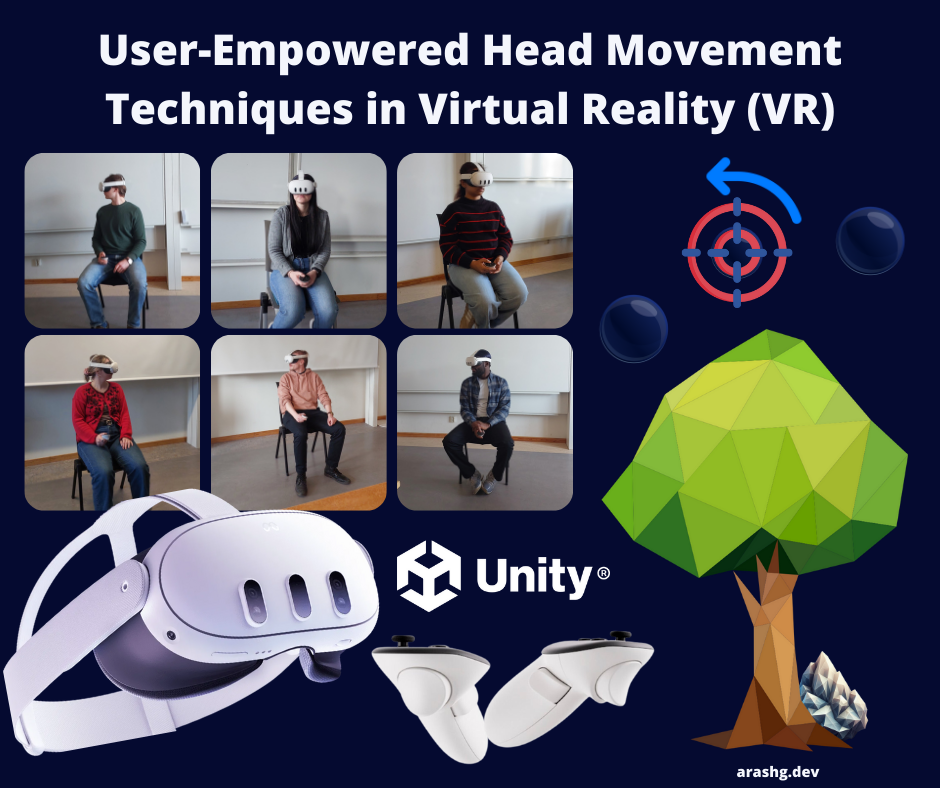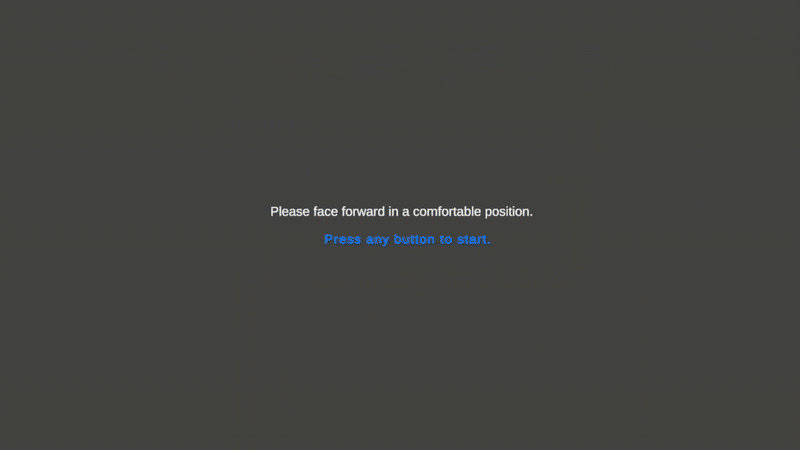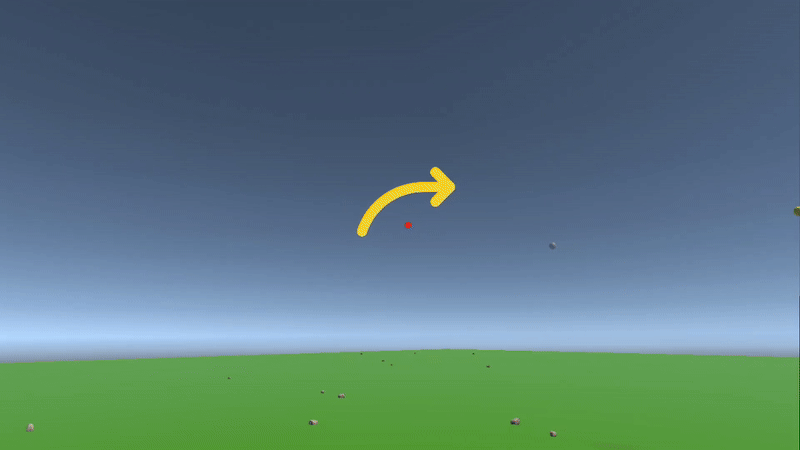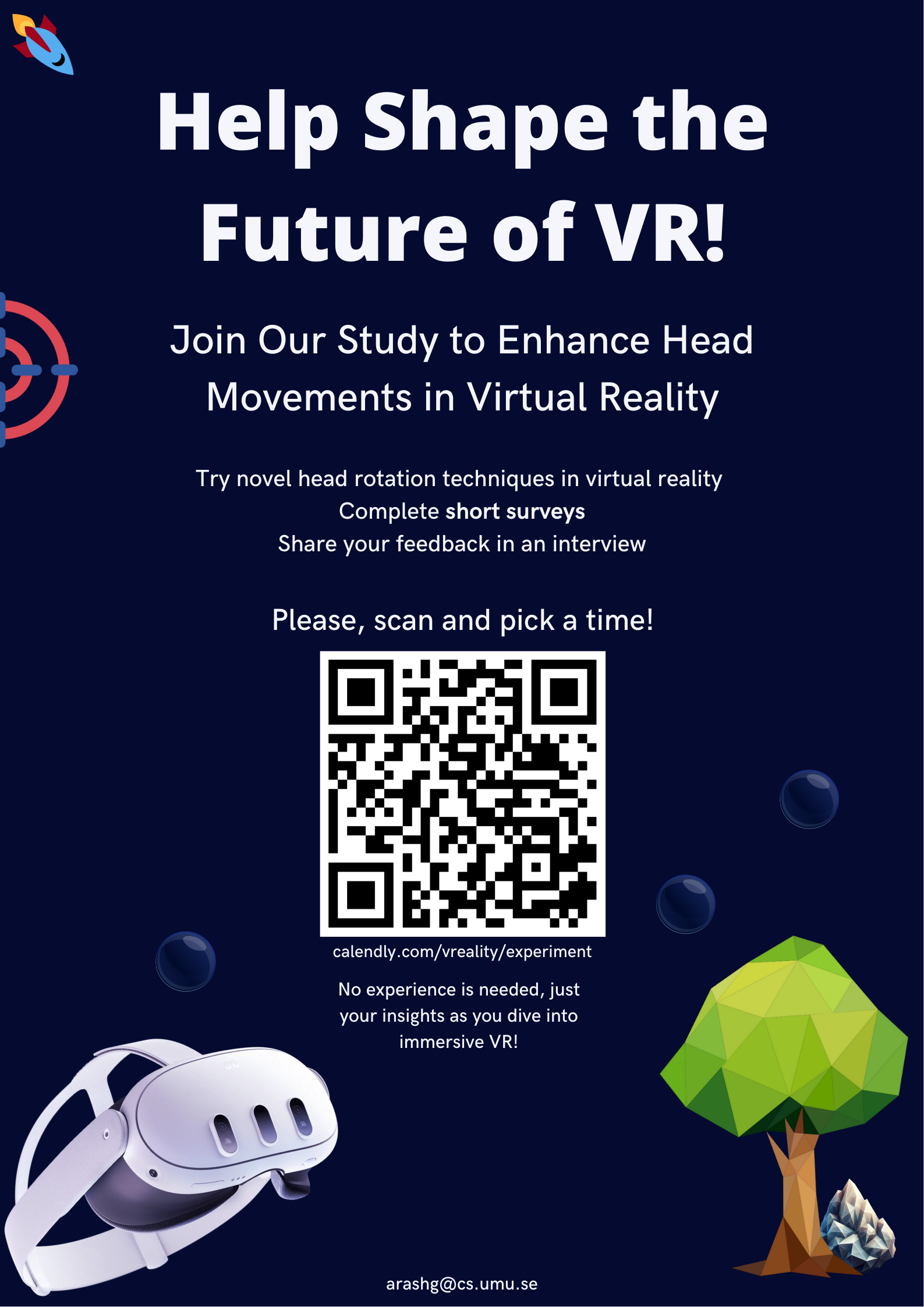ViewShift: Interactive and Adaptive Rotation Gains in Virtual Reality (VR)

As part of my Master's thesis in Human-Computer Interaction (HCI) at Umeå University, supervised by Prof. Anders Lundström, I explored novel head rotation amplification techniques in Virtual Reality (VR) specifically designed to overcome the challenges posed by physically restricted turning angles in seated VR environments.
In seated virtual reality (VR), where large physical turns are limited, altering the mapping between physical and virtual movements can amplify head rotation, enabling efficient view control with reduced physical effort. This thesis introduces two amplified head rotation (AHR) techniques for seated VR: the user-empowered Interactive, which affords user-timed switching between high and low gain, and Adaptive, which adjusts gain automatically based on head-motion kinematics. We evaluated both techniques in a mixed-methods study (n = 31), compared with a Static constant-gain baseline (g = 2.5) across a head-pointing task and a 180° rotation task. Both Interactive and Adaptive improved head-pointing performance relative to Static, while increasing physical head movement; cybersickness remained low and virtual–physical heading offsets were generally modest. Qualitatively, participants valued Interactive for the agency and control it afforded. Notably, this control enabled an emergent behavior in which users intentionally reoriented the virtual view via asymmetric rotational gains — a user-initiated redirection strategy we term ViewShift. Adaptive reduced cognitive load but could occasionally misalign with user intent. Together, the findings suggest potential for giving users control over rotational gains and highlight visible, user-centered AHR as an interaction technique for seated VR.
Implemented Prototype in Unity 3D
Techniques
Static Gain (Baseline)
Static amplification: Physical head rotation multiplied by a fixed factor. For example, a 30° turn becomes 60° in VR (gain = 2).
Interactive (User-Empowered) Gain
Interactive amplification: Gives users direct control over rotational gains, allowing them to manually toggle between high and low gains using VR controllers during ballistic (rapid rotation) and corrective phases for higher accuracy.
Adaptive Gain
Adaptive amplification: Automatically adjusts the rotational gain based on head rotation velocity and acceleration, increasing during rapid (ballistic) movements and returning toward normal gain during slower, corrective movements to support precise alignment.
ViewShift: Emergent Reorientation Strategy
During the study, several participants discovered they could intentionally reorient the virtual view without torso rotation by alternating between high- and low-gain states in the Interactive technique.
By applying asymmetric gain sequences—either fast-out/slow-back or slow-out/fast-back—participants could intentionally create and exploit a virtual–physical heading offset in a desired direction to reorient the view.
Study Design
We conducted a mixed-methods, within-subjects evaluation comparing three rotational gain techniques for seated VR: Static (constant gain 2.5×), Interactive (user-timed switching), and Adaptive (automatic adjustment based on head rotation velocity/acceleration).
31 participants performed two tasks (head-pointing and 180° rotation) under all techniques in randomized order.
Metrics Collected
Objective Measures
- Task Completion Time: Time required to complete tasks.
- Error Rate: The number of times targets were missed, and the angular deviation from the intended target.
- Virtual–Physical Heading Offset: The absolute angular difference (in degrees) between a participant’s physical yaw heading at baseline (recorded when selecting the front home target at trial start) and their heading when re-selecting that same target at mid- or end-task checkpoints. This measure captures any lasting virtual–physical misalignment accumulated due to asymmetric rotational gains.
- Physical Accumulated Head Movement: Total physical head rotation accumulated during each task.
Subjective Measures
- NASA-TLX: Perceived workload across mental, physical, and temporal dimensions.
- CSQ-VR: Self-reported cybersickness symptoms before and after each block.
- Self-designed Usability Questions: How participants perceived each technique in terms of Control, Comfort, Ease of Use, Precision, Applicability, and Naturalness.
Qualitative Accounts
- How users experienced amplified head rotation compared to normal 1:1 mapping.
- How participants experienced each technique in terms of control, sense of agency, precision, naturalness, and acceptance.
- How head rotation amplification affected users' sense of direction and spatial orientation.
- How users perceived, managed, and recovered from virtual–physical heading offsets.
- Preferences between different amplification techniques (interactive vs. adaptive).
Tasks

180° Rotation Task

Small Bubbles Task (90° and 180° Conditions)
Links
- Full Thesis (PDF): /viewshift.pdf
- DiVA Portal Record: https://umu.diva-portal.org/smash/record.jsf?pid=diva2:2015400
- GitHub Repository: vr-head-rotation-amplification
- React Prototype: rotationgains.netlify.app
Study Poster
